
..........................................................................................................................................................................................................
has steel become a bit less real?

you need only look back to the late eighties and even into the early nineties to see professional bike racers aboard rather delectable steel frames, often with shiny chrome, particularly when decorating italian steel. those tubes were considerably thinner than the bulk of their carbon replacements available in the present day. my original carbon fibre colnago c40 features fluted carbon tubes that emulate the columbus steel employed on the colnago master, effectively the c40's antecedent. in the early 1990s carbon was in its infancy; still a bit noodly now and again, before finite element analysis entered the fray. between titanium, aluminium alloys and the onward march of burnt plastic, steel was relegated to the position of 'has-been'.
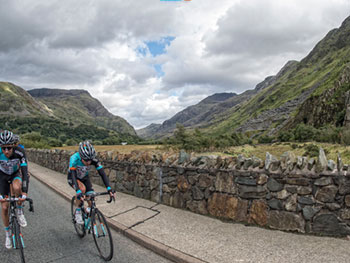
of course, there are always those who never lost the faith, most notably massachusett's richard sachs, eventually joined by the vanguard of steel construction in portland, oregon which in turn, fostered a whole new steel is real culture across north america, the uk and mainland europe. though carbon is nice and with the incomparable ability to be tuned to the builder's requirements, it's not the world's toughest material, despite what formula one race cars might have taught us. different place, different need. though frame repairs are not something likely to trouble your average professional team, those of us who have to pay for the privilege would prefer something a bit more fixable.
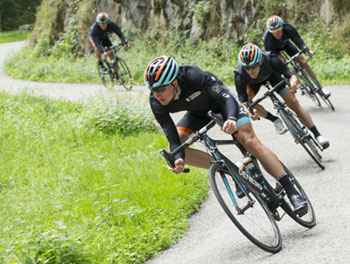
it was comforting therefore to note that condor cycles offered the acciao as an option for the guys in the rapha condor jlt team (jimmy mccallum was known to have favoured the steel option over a carbon leggero) and the flags were out when the madison genesis team put all their weight behind a reynolds 953 frame for a full racing season to the exclusion of all else. this is a situation that has endured for the past two seasons; the fact that they have not notably been occupying the rearmost portions of the domestic peloton, has given great credence to the viability of steel as a tool for the professional rider.
or at least that's the way it looked until the end of last week when genesis announced the release of the all-carbon zero, examples of which were being made available to the madison genesis team for this year's tour of england and wales. so does the appaearance of a carbon range signal the end of the line for steel in the race team? i asked madison genesis rider chris snook, a man who has ridden both options.
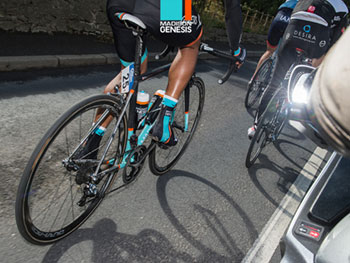
"Certainly not. The Zero is all about choice. What it provides is another option for riders to choose from. You will see the team continue to use the steel bike throughout the rest of this season; and next. Pete Hawkins won the Irish Crit champs recently on his Genesis Volare 953. With its short wheelbase and stiffness, the 953 frame is perfectly suited to criterium racing, so expect to see it prominent at the Pearl Izumi Tour Series again."
it would be naive to deny that steel has inherent problems, not least of which is that of weight. though the uci minimum limit can often be closely approached, there's no denying that carbon beats metal hands down. so has the zero now seen the light of day because of this factor? have genesis pretty much reached steel's minimum in this respect?

"Weight is a part of it, yes. Genesis have reached appoint where they have taken the material as far as it can go. To get the weight down further at this stage does not make sense for the cost implication involved. To compromise the bike's race pedigree by reducing stiffness was not an option. However, Genesis will continue to work with Reynolds to keep at the cutting edge of the steel game.
Aerodynamics has been another consideration in the creation of the Zero. One of the great advantages of carbon is that you aren't restricted by shapes in the same way as with steel."
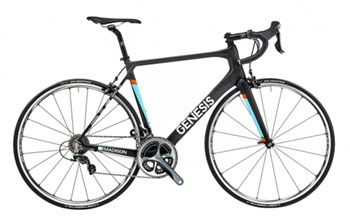
racing is often used as a means to promulgate research and development and not just in the cycling milieu. professional riders are a lot harder on their kit than any of us are likely to be, and with the frequency of hard training and racing, any design or equipment flaws will likely show up a lot quicker than they would in the hands of the civilian. it's often the sole reason why you see the pros on gear that can't yet be found in the shops; by the time it gets there, it ought to be working pretty well. are genesis following a similar path, to see if carbon really is that much better than steel?
"We aren't going out to say one material is better than the other. The aim is to use whichever material correctly, with thought-through design and sound geometry. Genesis have a reputation for producing steel bikes, but have never restricted themselves to using just one material. We have a range of aluminium road bikes in the Volant as well."

last week's press release announced that the new carbon zero was being made available in time for the tour of britain. the timing obviously had as much to do with marketing as with race strategy, but had the team invoked a three-line whip with regard to the zero, or are there any team riders continuing with the steel frames?
"I am continuing to use my steel Volare at the minute. Riders will have the choice in which bike they would like to use for any given race. All the riders at the ToB have both options there to choose from."
if both materials are to continue fighting for results in the madison genesis racing team, that suggests a particularly enlightened attitude on behalf of the sponsor and the team management. what had they learned about steel over the past couple of seasons as to its suitability for the professional peloton?
"Genesis have learned a great deal. The first lesson learned in the early days is that it is very easy to over-build a steel bike using 953. Feedback from the team regarding the first generation bike was that it was too harsh; a property not normally associated with steel. The latest generation bike uses a more sloping top tube, which is smaller in diameter and also bi-ovalised to provide stiffness and compliance where it is needed most.
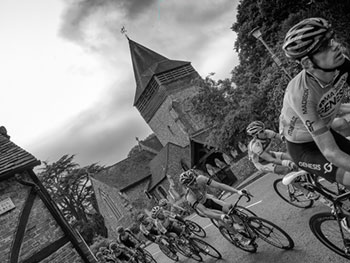 "The bike was successfully raced throughout 2013, taking a number of high profile wins, podiums, and now a national title. In that regard, it proves that steel certainly has a place in the professional peloton.
"The bike was successfully raced throughout 2013, taking a number of high profile wins, podiums, and now a national title. In that regard, it proves that steel certainly has a place in the professional peloton.
"One of the key things with steel, and stainless steel in particular, is the longevity of the material. Steel isn't as fragile as carbon. It may dent, but the bike can still be ridden. The bikes have proved to be hardy, and we still use a number of the frames from last year's fleet to this day."
given the above information and the fact that the retailer is unlikely to provide you with a new frame if you happen to ding it on the sunday ride, presumably steel will remain in the genesis retail offerings?
"Steel will continue to be in the Genesis line up in a big way. Genesis still has a strong relationship with Reynolds and will continue looking to push boundaries with the material. The 2015 range has recently been launched and contains more steel bikes than ever before."

for those of us with a penchant for the ferrous material over more fragile plastic, this is good news. there's a whole host of plain gauge tubing at the budget end of the market that's mostly functional rather than featuring any sporting pretensions. other than phoning richard sachs to ask if there's a gap in his schedule, the less well-heeled amongst us ought to be grateful that a major player in the british cycle market continues to have faith in lightweight steel. however, considering chris snook's comments above, genesis would be failing in their commercial duty if they didn't at least take a look at the world of carbon. with the arrival of the zero, does this mean genesis will now forge ahead with other carbon offerings in the future?
"Genesis will continue to forge ahead with all materials. There may well be more carbon to come in the future."
very many thanks to madison genesis' chris snook for his considerable assistance with this article.
saturday 13 september 2014
 ..........................................................................................................................................................................................................
..........................................................................................................................................................................................................